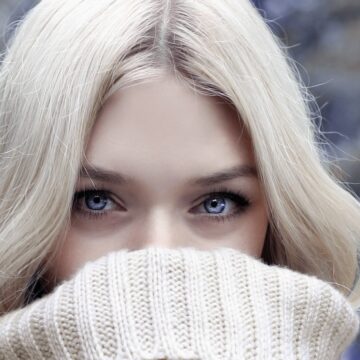
-
- During winter, the cold, dry air and the lack of humidity can wreak havoc on your skin.
- As a result, various skin complaints commonly occur during this season due to dehydration.
- Among these include acne which can be remedied by using moisturizers and eczema which can be prevented by just bathing once a day.
While dry skin is something we have dealt with at some point, winter brings more than just your basic dry skin. As a result of irritation and dehydration, your skin could be facing a slew of skin problems including winter rash, breakouts, redness and many more.
Here are nine common winter skin issues along with tips on how to beat them.
Acne

Dry skin can cause acne which can happen on any part of the body particularly on the face, neck, chest, back shoulders and upper arms. You can reduce acne by not touching your face often. Other remedies to get rid of the pesky winter acne include antibiotic treatments, gentle cleansers and moisturizers.
Eczema

Eczema flare-ups which commonly occur on the elbows, knees, hands and face, causes red, inflamed and very dry skin. The best way to cope with the irritated skin is to use a fragrance-free moisturizer and avoid bathing more than once a day. Steroids can ease symptoms if breakouts are severe.
Chapped Lips

Cracking, red, chapped lips are one of the most common skin complaints during winter. Because of its very thin layers of skin, the lips are the most likely to dry out during the cold season. In severe cases, cracking and splitting can occur, which is painful and does not easily heal. Often, people make the mistake of licking their lips while out in the cold, which worsens chapping and leads to more irritation. Use lip balms instead to moisten and hydrate the lips as well as relieve pain.
Raynaud’s Disease

In Raynaud’s disease, blood vessels that supply blood to the skin become narrow, restricting blood flow to affected areas. It causes some parts of the body to turn into a deep purple and feel numb and cold in response to prolonged exposure to cold temperatures. When the skin finally warms up, it gets swollen, tingly and painful. To cope with the disease, people dress up in layers with protective clothing like gloves, thick socks, and insulated shoes when they stay outside for a long time.
Windburn

Windburn is a skin irritation that causes dry, red, burning skin. When you’re outside, it’s best to wear clothing that can cover exposed skin such as scarves, coats and hats.
Winter Itch

Dry, flaky and itchy skin is unavoidable especially when you’re forced to stay inside with the heater on during winter. The outside air is also very dry and strips the moisture out of the skin. Replenish the skin’s hydration by applying moisturizer and skin healing lotions on the affected areas.
Psoriasis

Psoriasis is a skin condition that is triggered when the skin produces too many skin cells. This results in red, flaky, crusty patches of skin covered with silvery scales which normally appear on the elbows, knees, scalp and lower back, but can appear anywhere on your body. Although incurable, symptoms can be decreased through the use of hydrocortisone, vitamins D and A creams, coal tar treatments as well as relaxation techniques because stress can worsen the condition.
Cold Uriticaria

Cold uriticaria, also known as cold hives, is a chronic, reactive skin disorder. Symptoms may include large welts appearing on the skin, hives and itching after exposure of the skin to cold temperatures. While antihistamine can provide relief to some people, avoiding prolonged cold exposure is the most effective way to ease the pain.
Rosacea

Rosacea is a very common condition which occurs in all kinds of weather. Mainly affecting the face, rosacea can cause flushing and reddening of the face making you look like you’re blushing or just ran a race. Along with the redness, some people also experience pustules, and dry eyes or eyelids. Avoid caffeine, alcohol, spicy food, wine, cheese and yogurt, because they can make rosacea worse. Antibiotics, skin peels and other treatments may help.
Source: Advanced Dermatology
